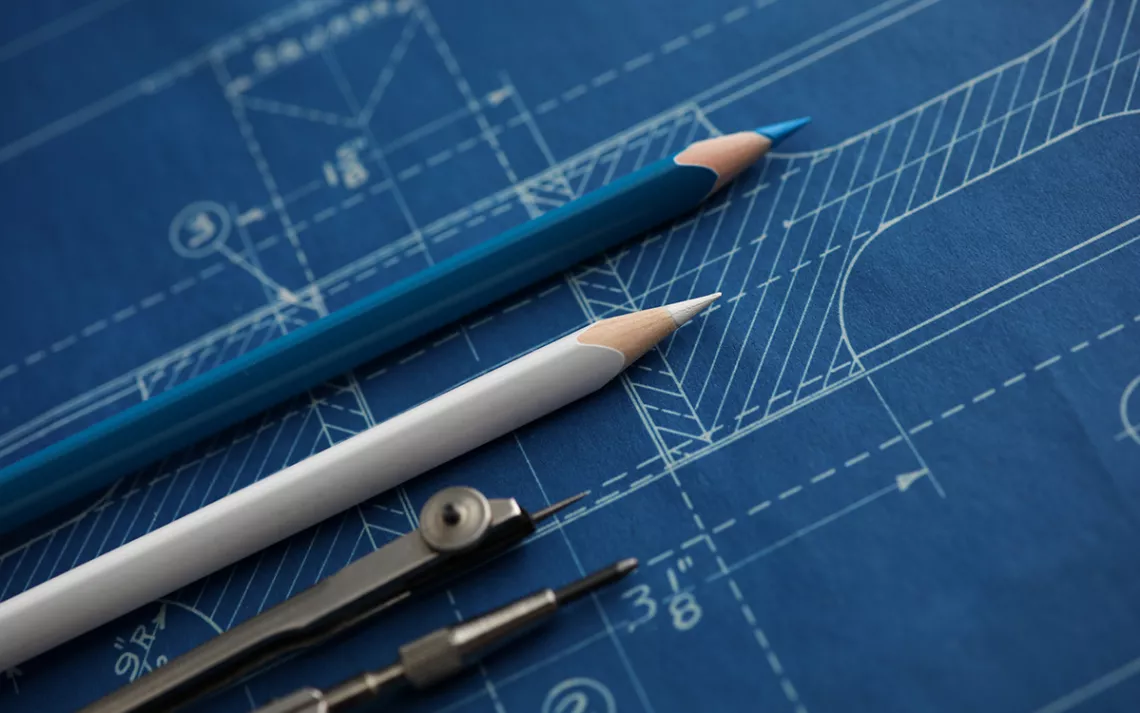Architect Guide to Sustainable Building Materials
Architect Guide to Sustainable Building Materials
Blog Article
Comprehending the Diverse Occupation Paths Available for Aspiring Architect
As an ambitious Architect, you have a world of occupation courses waiting for you. Whether you're drawn to conventional design or the nuances of lasting design, there's a specific niche that aligns with your passions.
Traditional Architecture: Creating Frameworks and structures
Standard architecture concentrates on creating structures and structures that mix performance with aesthetic appeal. Your layouts can reflect cultural heritage, showcasing regional traditions while fulfilling modern-day demands.
You'll establish abilities in composing, model-making, and site evaluation, enabling you to visualize and connect your concepts successfully. Involving with clients, you'll require to comprehend their vision and convert it into feasible designs.
Moreover, developing codes and sustainability techniques are important in your work, guaranteeing your frameworks are risk-free and eco-friendly. As you grow in your job, you'll discover chances in domestic, industrial, or also repair projects, each offering distinct challenges. Welcoming standard style leads the way for a fulfilling job that pays tribute to the past while forming the future.
Urban Planning: Forming Neighborhoods and Public Spaces
As an aspiring Architect, you can play a crucial role as an urban planner, changing exactly how areas communicate and operate. By employing community involvement techniques, you'll ensure that homeowners have a voice fit their environment. And also, incorporating lasting layout principles will certainly aid create rooms that not only satisfy today's requirements however likewise protect the future.
Role of Urban Planners
While many may think of architects as the single dreamers behind buildings, city planners play a crucial role in shaping the broader landscape of neighborhoods and public rooms. By collaborating with different stakeholders, you'll assist develop parks, transport systems, and domestic locations that promote social communication and availability. Your competence in spatial style and area dynamics enables you to envision future development while preserving social heritage.
Community Involvement Approaches
Effective community engagement techniques are vital for urban planners to ensure that the voices of homeowners are listened to and valued in the preparation process. To promote meaningful dialogue, you ought to focus on open discussion forums and workshops where community members can express their concepts and problems. Use studies and social media to get to a more comprehensive audience, guaranteeing varied perspectives are consisted of. Teaming up with local organizations can enhance count on and promote deeper connections. It is essential to give clear details about decision-making processes and proposed jobs, permitting homeowners to really feel educated and empowered. By actively paying attention and incorporating comments, you'll create areas that show the neighborhood's needs, eventually causing more successful and lasting metropolitan atmospheres. Welcome openness and constant dialogue for lasting effect.
Lasting Design Principles
When developing urban areas, including sustainable style concepts is critical for creating environments that thrive both environmentally and socially. Think about incorporating environment-friendly areas, like yards and parks, to boost biodiversity and improve air quality.
Designing with water preservation in mind is also essential-- think of rainfall gardens and absorptive surfaces to take care of stormwater. Including neighborhood participants during the planning process assurances that the areas you develop meet their needs and motivate social interaction. By accepting these principles, you'll add to vibrant, lasting urban landscapes that profit every person.

Landscape Design: Developing Lasting Exterior Atmospheres
As you explore landscape architecture, you'll discover necessary style principles that develop practical and attractive exterior rooms. Lasting practices play an essential duty in ensuring these settings grow while lessening ecological influence. And also, you'll find a range of profession possibilities that permit you to make a genuine distinction in just how people communicate with nature.
Layout Principles in Landscape
Understanding layout principles in landscape architecture is vital for producing lasting outdoor settings that integrate with nature. You'll need to contemplate aspects like scale, percentage, and equilibrium to assure your styles feel natural and inviting. Additionally, pay attention to seasonal changes, developing with products that complement the environments year-round.
Sustainable Practices Review
Sustainable methods in landscape design not just focus on aesthetic appeals yet likewise focus on ecological wellness and source conservation. You can develop areas that promote soil health and wellness, such as utilizing organic products and practicing permaculture concepts. Inevitably, these techniques guarantee your layouts benefit both people and the setting for years to come.
Job Opportunities Exploration
With a solid structure in sustainable practices, landscape architecture provides a selection of career courses that enable you to make a purposeful impact on the atmosphere. Urban coordinators typically work together with landscape engineers to produce environment-friendly areas in metropolitan settings, improving city livability. continue reading this If you're enthusiastic about education and learning, consider becoming a landscape architecture educator, inspiring future generations.
Sustainable Style: Concentrating On Eco-Friendly Practices
As you discover your profession in design, accepting eco-friendly techniques can set you apart in an affordable field. Sustainable design concentrates on producing structures that minimize environmental effect while enhancing resident wellness. By incorporating sustainable materials, energy-efficient systems, and sustainable structure techniques, you'll add to a greener future.
Beginning by acquiring understanding of environment-friendly accreditations like LEED or BREEAM, which can boost your qualifications. Consider how natural light, air flow, and thermal effectiveness can enhance design. Team up with engineers and ecological consultants to innovate services that decrease waste and conserve sources.
Do not forget the significance of area participation-- appealing local stakeholders can influence layouts that integrate with the environment. As customers progressively focus on sustainability, your experience in environment-friendly techniques will not only draw in jobs but additionally fulfill your enthusiasm for liable design. Embrace this vital element of the occupation, and see your job grow.
Historical Conservation: Securing and Recovering Cultural Heritage
While you commence on your architectural journey, take into consideration the crucial role of historical preservation in keeping our cultural heritage. This field concentrates on the security and restoration of significant buildings, websites, and structures that inform the tales of our past. By participating in historic preservation, you'll assist secure the architectural heritage that shapes community identity.
As a historic conservation Architect, you'll examine historic relevance and examine the condition of structures. You'll function carefully with historians and preservationists to ensure authentic restoration techniques are employed. This occupation path allows you to mix creativity with research, allowing you to design services that appreciate original products and craftsmanship.
Your work not just adds to sustainability by recycling existing buildings however additionally cultivates a feeling of pride within neighborhoods. Accepting this path will assist you come to be a guardian of background, maintaining the stories and aesthetic appeals that enhance our lives.
Interior Style: Enhancing Indoor Spaces
Historic preservation and interior design both share a dedication to boosting the built atmosphere, however they concentrate on various elements. While historical preservation highlights maintaining a structure's historic and cultural worth, indoor architecture zeroes in on optimizing indoor spaces for performance and appearances.
As a hopeful Architect, you'll discover that indoor style permits you to mix creativity with technical skills. You'll design spaces that not just look excellent but also promote comfort and effectiveness. This area includes comprehending how light, shade, and materials communicate within a room, affecting state of mind and functionality.
You'll function on different jobs, from household homes to business workplaces, guaranteeing that each atmosphere meets the needs of its residents. By focusing on user experience, you can transform insides into motivating and practical rooms, making a considerable influence on just how individuals connect with their surroundings. Welcome the opportunity to enhance interior environments and form the way individuals live and function.
Industrial Style: Merging Capability With Aesthetics
Commercial style plays an essential duty in producing products that perfectly mix aesthetics with functionality, making sure that what you utilize everyday is not just aesthetically attractive however additionally sensible. As a hopeful Architect, you could involve yourself in this area, concentrating on designing every little thing from furniture to consumer electronic devices. Your work involves recognizing user needs, materials, and producing procedures, permitting you to you could look here develop cutting-edge remedies that boost everyday experiences.
In commercial design, you'll frequently team up with marketing experts, suppliers, and engineers, making certain that your layouts are not only lovely yet likewise viable. You'll find out to balance type and feature, prioritizing usability without compromising design. By refining your skills in mapping out, 3D modeling, and prototyping, you'll be well-appointed to bring your ideas to recommended you read life. This job course provides a vibrant environment where imagination meets functionality, making it a fulfilling selection for engineers thinking about forming the items of tomorrow.
Often Asked Inquiries
What Educational Qualifications Do I Need to End Up Being an Architect?
To become an architect, you'll need a professional degree in style, normally a Bachelor's or Master's. In addition, you'll need to finish an internship and pass the Architect Enrollment Examination to practice legitimately.
Are There Qualification Demands for Different Architectural Profession Paths?
Yes, there're accreditation needs for different architectural courses. Architect. You'll require to pass exams, full internships, and sometimes go after specialized training, depending on your chosen emphasis, like landscape style, city design, or historical preservation
What Software Application Skills Are Necessary for Designers Today?

How Can I Gain Practical Experience While Studying Design?
You can obtain functional experience by interning at architectural firms, participating in style competitors, offering for area jobs, or teaming up with schoolmates on real-world projects. These chances improve your skills and develop valuable connections in the market.
What Work Opportunities Exist Outside Conventional Style Firms?
You can explore different task possibilities outside standard design companies, like urban planning, indoor layout, landscape design, building management, realty development, and even roles in sustainability consulting. Each offers special obstacles and rewards.
Whether you're attracted to conventional architecture or the subtleties of lasting layout, there's a particular niche that aligns with your rate of interests.When creating metropolitan spaces, integrating lasting style principles is important for producing environments that prosper both ecologically and socially.As you discover landscape style, you'll discover vital style concepts that develop practical and lovely outside spaces.Recognizing design concepts in landscape architecture is crucial for developing sustainable exterior settings that integrate with nature.In commercial layout, you'll often work together with online marketers, producers, and engineers, ensuring that your layouts are not only beautiful however also feasible.
Report this page